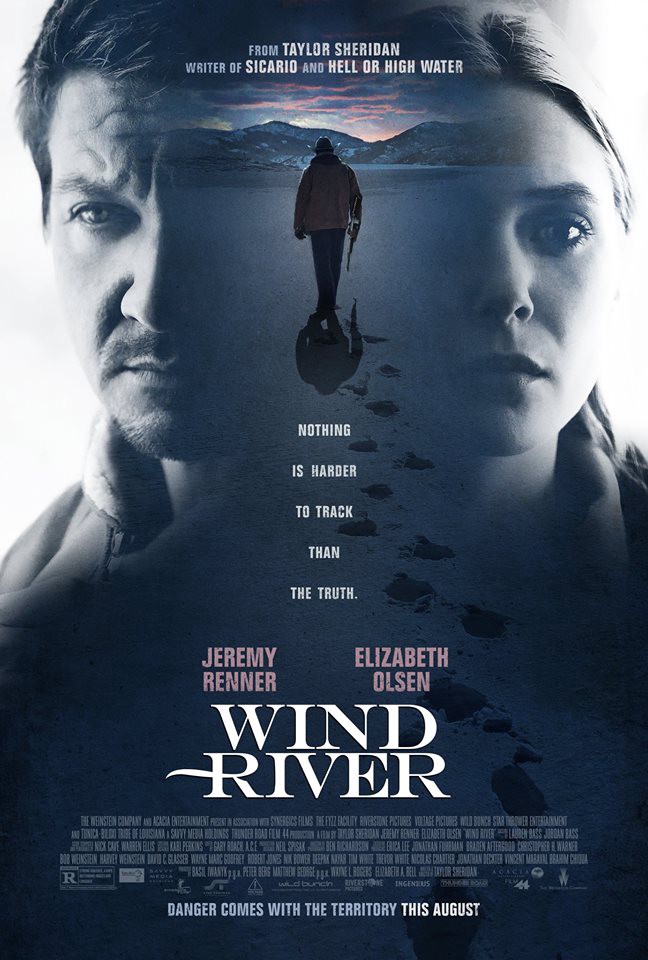Taking the director’s chair after a series of excellent screenplays, Taylor Sheridan proves he’s a force on the other side of the camera, too, giving this murder mystery on a Native American reservation a frigid bite.

With so many blockbusters clogging movie theaters during the summer, a movie like Wind River could easily breeze right past your radar. It shouldn’t.
The film is directed by Taylor Sheridan, who has quietly become one of Hollywood’s most reliable names in the past few years. He penned Sicario and Hell or High Water, the latter a Best Picture nominee. Wind River sees him taking the director’s chair for the second time, and for the first time with his own script.
It opens to the jarring image of a teenage girl hysterically running, barefoot, through a large expanse of snow. The girl’s body is later discovered by a hunter named Cory (Jeremy Renner), on the Wind River Indian Reserve in Wyoming.
The FBI sends its closest agent, Jane Banner (Elizabeth Olsen), who had to drive from Las Vegas and isn’t prepared for the cold weather (Cory points out she’ll have frostbite in 15 minutes based on the way she’s dressed). Banner is able to deduce that the victim was abused before her death, but how she ended up so far away from civilization remains unclear.
Faced with a complete lack of resources on the reservation, Banner enlists the help of Cory and anyone else willing to help to track the mystery on the reservation’s vast, unforgivingly cold landscape.
The film has clear political undertones when tackling the hardships faced by Native Americans living on reservations, such as a severely understaffed police force. It also brings up the startling fact that no statistics are kept on the number of Native American women who go missing. The number is completely unknown, and it’s the only demographic that doesn’t have these statistics.
By telling these truths and lovingly exploring Wind River’s snow-covered setting (Ben Richardson does great work as the cinematographer), Sheridan is able to create a world the viewer will feel they know intimately for 111 minutes. It’s a testament to the quality of the movie if, by the time the credits roll, you forget you are in a theater, a mind trick this film is quite capable of.
Sheridan’s screenplay is the driving force that swerves between unexpected intensity and quieter, character-building moments. Action scenes are sparse, but when they happen, they’re violent and upsetting.
Olsen and Renner (who previously shared the screen as superheroes in a couple of Marvel movies) are given excellent material, and make the most of it. When either of them are in danger, it’s nerve-wracking.
Much like Hell or High Water last year, this film saw a quiet summer release — as of last week, Wind River was screened in only 40-some theaters nationwide, with plans to gradually expand. High Water beat an unlikely trail that put it in contention for four Academy Awards last year. With cinematography, director and an original screenplay under its belt, Wind River can potentially replicate its predecessor’s success.
Wind River’s frigid atmosphere and blockbuster diversion make it a standout summer release. It plays much more like a psychological thriller usually reserved for the fall movie window. Hopefully, that uniqueness can carry it to the awards season this winter. ••




